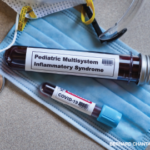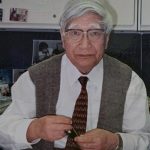 NEW ORLEANS—Many rheumatologists will recall their surprise when reading the results of the CANTOS trial in 2017. In the study, targeting the interleukin-1β innate immunity pathway with canakinumab yielded a significantly lower rate of recurrent cardiovascular events than placebo in patients with previous myocardial infarction (MI) and a high sensitivity C-reactive protein of 2 mg/L or more.1 How could an immunosuppressive medication have such a significant effect on lowering the frequency of cardiovascular events in high-risk patients? This question led to great interest in a 2023 PRSYM presentation titled Heart on Fire: Immunobiology of Cardiovascular Inflammation in (Some) Rheumatic Disease.
NEW ORLEANS—Many rheumatologists will recall their surprise when reading the results of the CANTOS trial in 2017. In the study, targeting the interleukin-1β innate immunity pathway with canakinumab yielded a significantly lower rate of recurrent cardiovascular events than placebo in patients with previous myocardial infarction (MI) and a high sensitivity C-reactive protein of 2 mg/L or more.1 How could an immunosuppressive medication have such a significant effect on lowering the frequency of cardiovascular events in high-risk patients? This question led to great interest in a 2023 PRSYM presentation titled Heart on Fire: Immunobiology of Cardiovascular Inflammation in (Some) Rheumatic Disease.
Heart Recovery
Mark Gorelik, MD, an assistant professor in the Division of Pediatric Rheumatology, Allergy and Immunology, Vagelos College of Physicians and Surgeons, Columbia University, New York, began the session by discussing the model of inflammation used to explain poor myocardial recovery in many patients after MI. Evidence in the literature supports the concept that adverse remodeling of contractile myocardium into fibrotic tissue in patients who have suffered an MI is driven by a multifaceted immune and inflammatory cascade.2 A series of cytokine, chemokine and leukocyte-driven responses after myocardial injury appears to lead to the myocardial fibrosis and chamber dilation seen in many patients.
Watkins, Beloucif and other researchers have noted that the epicardium, once thought to be a passive lining of the heart mostly useful for mechanical support, may play a regenerative role after MI.3,4 Just as the epicardium can give rise to fibroblasts, smooth muscle cells and endothelial cells in the heart during embryonic development, so too can epicardial activation in the post-MI period in adults result in re-expression of fetal gene programs that allow for the repair of injured myocardium.5
Dr. Gorelik explained that this situation makes sense when one realizes that immune-origin cells make up about 10% of the heart. One such immune-origin cell of interest is the neutrophil. In 2017, Horckmans et al. investigated the role this cell type plays in post-MI inflammation and repair. The authors found that, compared with control mice, neutrophil-depleted mice who underwent MI had worse cardiac function, more fibrosis and progressive heart failure.6 This finding may imply that therapies for post-MI care should carefully avoid reducing neutrophil-driven inflammation because doing so may impair cardiac remodeling.
Kawasaki Disease
Next, Dr. Gorelik discussed a disease that remains nearly as enigmatic in its cause and pathogenesis as it was when first reported in the 1960s: Kawasaki disease. Predominantly affecting children, this condition can lead to significant pathology of the coronary arteries, with giant coronary artery aneurysms considered the most potentially dangerous complication. Researchers have struggled to describe the chronology of histopathologic changes in the coronary arteries of patients with Kawasaki disease, perhaps because the features of this vasculitis can be heterogeneous from vessel to vessel within an individual patient and even within sections of the same vessel.




